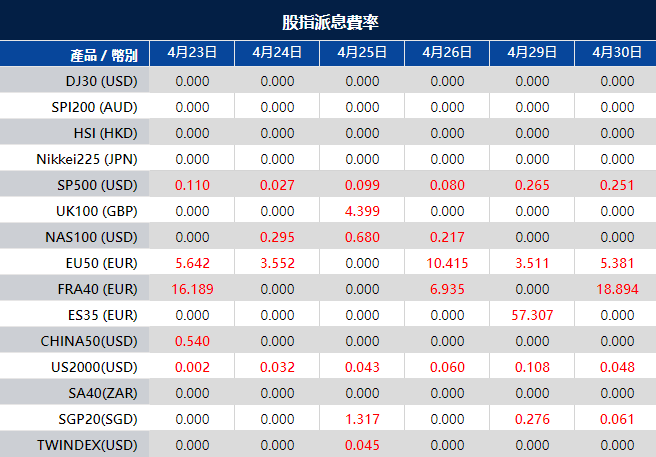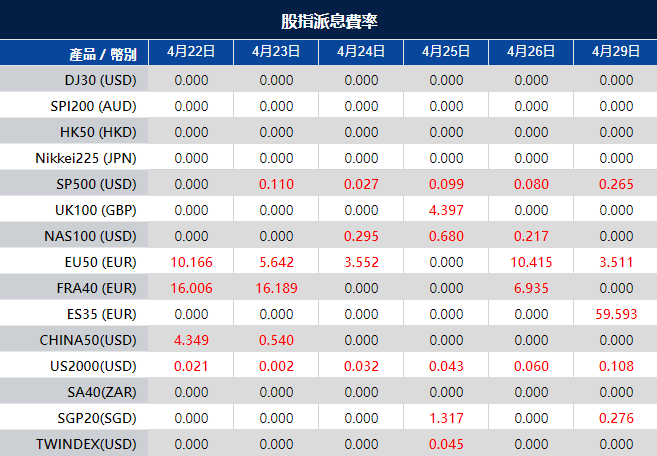ICYMI: Market summary for today, 23 April 2024
As the financial markets gear up for the release of the U.S. Personal Consumption and Expenditure series this Friday, the EUR/USD pair remains steady. With the pair approaching a 5-month low, traders are keeping a keen eye on any signals that could dictate short-term market directions. Historically, the lead-up to such data releases has seen increased volatility in forex markets. A cautious forecast suggests that if inflation data reports higher than expected, it could reinforce the dollar’s position, pressuring the EUR/USD pair further.
Interest Rate Dynamics and Euro Challenges
With the European Central Bank (ECB) potentially cutting interest rates as early as June—a move that might precede the Federal Reserve’s actions—the disparity in interest rates between the Eurozone and the U.S. could widen.
Such a scenario historically leads to a weaker Euro as investors seek higher returns in dollar-denominated assets. Given the persistent lower rates in the Eurozone, the Euro faces substantial headwinds.
For traders, understanding the nuances of ECB vs. Fed policies will be crucial. The expected ECB rate cut might offer short-term trading opportunities in EUR/USD pairs, as market reactions to policy differentials are typically swift and pronounced.
European-US Dynamics
Mild improvements in geopolitical stability, particularly between Israel and Iran, have provided some support to risk-sensitive currencies like the Euro. However, this support is often temporary, as fundamental economic indicators tend to have a more lasting impact. Traders should monitor these developments closely but prioritize economic data in their analysis.
The robust growth and persistent inflation in the U.S. continue to bolster the dollar. These economic conditions suggest a stronger dollar moving forward, unless unexpected economic data suggests a slowdown. The strength of the dollar is a crucial factor for EUR/USD traders, as it directly impacts pair dynamics.
While upcoming data releases like Germany’s Purchasing Managers Index (PMI) and the ifo Business Climate Index (IBCI) are crucial, their impact may be overshadowed by U.S. data given the current market focus. Investors might find these indicators less influential in the short term unless they deviate significantly from expectations.
What is the Impact of Upcoming Tech Earnings Reports?
Recent downgrades by UBS Investment Bank, particularly Jonathan Golub’s adjustment of major tech stocks like Apple, Alphabet, and Nvidia from Overweight to Neutral, reflect a broader sentiment shift. The largest weekly market cap loss recorded by this group underscores the volatility and potential revaluation of tech giants. Nvidia’s drastic drop, reminiscent of its March 2020 plummet, signals market nervousness, albeit with a partial rebound indicating some underlying resilience.
While individual tech giants may face slowed momentum, the broader tech sector still holds promise. This differentiation in sector versus individual stock performance can guide investors looking to diversify within tech. Furthermore, with other S&P 500 companies expected to see an earnings increase of 17%, there appears to be a redistribution of growth potential within the market.
The forthcoming earnings reports from Tesla, Meta, Microsoft, and Alphabet are highly anticipated, with potential to significantly influence market sentiments. Historical data suggests that unexpected outcomes in these reports can lead to substantial market movement – all which can potentially serve as opportunities for traders.





